Building your publishing ecosystem into a sustainable business without burning out
Unlock a practical strategy for authors to create an integrated publishing ecosystem that balances creative work with sustainable business practices.
You don’t need more funnels. You need a compass.
Most writers are burned out, underpaid, and overwhelmed not because they’re lazy, but because they’re doing too much stuff that doesn’t work. You only add by addition for so long before you only start growing through subtraction.
🦄Hapitalist🦄 helps you stop chasing tactics and start building a sustainable author business aligned to your values. Not just “make money online”, but how to do it without burning your life down in the process.
Live strategy calls. Practical frameworks. A thriving, weirdly supportive creative community. Built for people who don’t want to play the game the normal way.
Hi,
The publishing landscape has become increasingly complex. Authors today face a constant barrage of "next big things" and "silver bullet" solutions. It's exhausting trying to keep up with every new platform, marketing strategy, and publishing trend.
But you probably don't have an information problem. You have a sequencing problem.
All the information you need already exists. The real challenge lies in putting it together in a way that works for your specific situation without burning yourself out in the process. What's even better? It's actually simpler to integrate these pieces than most people realize.
Why do so many authors struggle? Because the industry often overcomplicates things. Sometimes this happens because "experts" make money by doing it for you. Other times it's because authors try to do everything at once instead of building systematically.
This methodology comes from over fifteen years of research, testing, and real-world experience. I've experienced both spectacular failures and incredible successes. More importantly, I've learned what works sustainably versus what leads to burnout.
The key is building an integrated publishing ecosystem that:
Makes the most of every piece of content you create
Uses your resources efficiently
Grows steadily without requiring constant attention
Creates predictable, sustainable income
Lets you focus on writing rather than constant marketing
In this article, we'll explore the five core components of a successful publishing ecosystem and how to implement them in a way that builds on your strengths while protecting your creative energy.
I’m not going to mention a lot of platforms here, because there’s not one platform I trust for everything. If you’re running ads to your web store, for instance, you probably want to use Shopify. However, if you are going to run ads to a landing page then you probably want something like OptimizePress with heat mapping and session recording for optimization.
Both of those are terrible for running a subscription, which you probably want to do on Substack of Patreon, and you’ll likely be using Kickstarter or Indiegogo for running your crowdfunding campaign.
Long story short, there is no singular platform that will save you. That’s why we call it an ecosystem, not a platform.
Understanding the foundation of your ecosystem
Before diving into specific tactics, let's talk about the two core principles that make a publishing ecosystem work: leverage and sustainability.
Leverage means doing things once and getting multiple uses from them. Think of it like planting a tree. You do the work once, but that tree keeps producing fruit year after year.
In publishing terms, we want our content and marketing efforts to keep working for us long after we create them. This might mean writing content that works across multiple platforms, or creating marketing materials that can support multiple books.
Many authors burn out because they try to do everything at once. They launch a podcast, start a newsletter, run ads, and attempt to be active on every social media platform simultaneously. This approach almost always leads to failure. The smart approach is to start with one thing and make it work well. Only after you've mastered that should you consider adding new elements to your system.
Smart authors think about how to reuse their work before they even start creating. Your blog posts can become book content. Your book content can fuel social media posts. Your marketing copy can work across multiple platforms. Your launch systems can be reused for future books. You aren’t cutting corners, just being strategic with your time and energy, which is the foundation of sustainability.
The key to sustainability is understanding that everything you do should be repeatable without burning you out. It needs to be scalable as your audience grows, manageable within your available time, and compatible with your creative process.
Many authors try to copy what works for others without considering if it's sustainable for their situation. What works for a full-time author with a team might not work for someone writing on the side.
The goal is to build a system that can grow with you over time, not one that requires constant heroic effort to maintain. By focusing on leverage and sustainability from the start, you create a foundation that supports your long-term success as an author.
The five-step integrated publishing system
Many authors jump straight into publishing without a clear plan. They release a book, try some marketing, and hope for the best. But publishing success isn't about luck. It's about building a systematic approach that works reliably over time. Let's explore the five key steps that create a solid publishing ecosystem.
Continuity through subscriptions - The foundation of any strong publishing business is predictable, recurring revenue. Think of subscriptions like the undercurrent of your author business. While they take time to build, they provide stability that helps you weather the ups and downs of publishing. You shouldn't obsess over subscriptions when first setting them up, but everything you do should funnel readers toward becoming subscribers.
Building your casual reader funnel- Retail sales aren't the end goal. They're a means of customer acquisition. Think of retailer sales as a funnel to convert casual fans into devoted readers. The point is to cast a wide net to find readers and bring them into your ecosystem where you control the customer relationship. You don't need retail sales to turn a huge profit. They just need to work well enough to keep bringing new readers to your door.
Using Kickstarter strategically - Kickstarter serves as the first step in your publishing journey. It's how you can make the most money from your most ardent backers while creating all your marketing materials for direct sales. Kickstarter comes first because it's a testing ground. You can validate your marketing messages, test different price points, and build excitement before a wider launch.
Creating a series landing page - Once you've proven your marketing through Kickstarter, you can create series landing pages that use that tested copy. This gives new subscribers a clear path to buy your work. You can create automated sequences offering special deals to new subscribers using the exact email messages that converted best during your campaign. The key is making these landing pages evergreen assets that keep working for you.
Building your web store - Your web store becomes the final piece, allowing you to sell directly to readers ongoing. While you'll offer all your books, focus on exclusive bundles readers can't get elsewhere. This gives people a reason to buy directly from you rather than retailers. Remember that once someone buys from you directly, they're much more likely to do so again.
The beauty of this system is that each piece builds on the others. Your Kickstarter creates marketing materials for your landing pages. Your landing pages feed subscribers to your web store. Your web store offers exclusive products to reward your most loyal readers. Everything works together to create a sustainable ecosystem that grows stronger over time
Building the undercurrent of your business with subscriptions
Many authors launch their subscription program with grand ambitions. They promise daily content, personal attention, and exclusive access to everything they create. While this enthusiasm is admirable, it often leads to burnout and disappointment when reality sets in.
Instead, subscriptions should grow naturally as part of your overall ecosystem. They aren't meant to be your primary income source when you start. Instead, they're a steady stream that builds over months and years, eventually becoming a reliable foundation for your business. They are the undercurrent of your business, but they don’t matter much until they matter a lot.
The key is starting small and sustainable. When you first launch a subscription, focus on delivering what you can easily maintain. This might mean sharing "burn off" content from your existing work - early drafts, character designs, behind-the-scenes glimpses. Don't create entirely new content streams until you have enough subscribers to justify the extra effort.
Even with 1,000+ paying members almost everything I generate is being used multiple times in multiple ways, without spending a ton of time servicing my membership. Now that we are making $20k/yr on subscriptions, it is now worth it to spend more time working on more community activities.
You don't need to spend tons of time worrying about subscriptions when you first set them up. The goal isn't to create an overnight subscription success. Instead, everything you do should naturally funnel readers toward becoming subscribers over time. This brings more recurring revenue into your business steadily and sustainably.
We use periodic pledge drives to increase subscriptions in bunches, usually 2-4 times per year, and augment them with special discounts that last 24-72 hours. These focused efforts let us boost our numbers and gain attention without constantly pushing subscriptions.
Here is how our membership looked after each big launch in the last two years:
January 1, 2024 – 324
March 1 – 470 (+146)
August 1 – 789 (+319)
September 15 – 888 (+99)
October 31 – 952 (+64)
December 10 – 1,052 (+100)
January 1, 2025 – 1,150 (+98)
July 19, 2025 – 1,238 (+88)
As you can see, the biggest pledge drive was still only 319 members (and it lasted 6 weeks, way too long). Each launch built on the previous one and we welcomed more people into our membership. It takes 1-2 years to build a sustainable membership like this, which is why it’s the undercurrent of your publishing ecosystem, not the focus of it.
When starting out, stick to one simple price plan until people are literally begging to pay you more. Don't add features or tiers that people aren't actively requesting inside your community. Only introduce higher price plans once your base plan is sustainable. When done right, you should see 10-20% of people upgrading over time.
Subscriptions are not the focus of your business, but they are the undercurrent of it. Everything should lead back to the membership, but you shouldn’t spend a ton of time executing on it until it is sustainable to do so for you.
The casual reader funnel
Most authors see retail sales as the end goal. They obsess over Amazon rankings and BookBub features, thinking these metrics define success, but this approach misses the bigger picture. Retail sales aren't the destination. They're the start of a journey to convert casual readers into devoted fans.
Think of retailer sales as your wide net. Amazon, Barnes & Noble, and other platforms give you access to millions of potential readers. These casual browsers might stumble across your book through algorithms, ads, or recommendations. That first sale is just your foot in the door.
The real magic happens when you turn these casual readers into direct customers. Every retail book should include clear pathways back to your ecosystem. Your back matter needs strong calls to action that guide readers to join your mailing list or visit your website. Once they're in your world, you control the relationship.
This is where most authors get it backward. They worry about making huge profits from retail sales when those platforms should really be customer acquisition channels. Your retail books don't need to generate massive profits. They just need to avoid losing money while bringing new readers into your ecosystem.
The beauty of this approach is that it's infinitely scalable. As long as your retail presence stays profitable (or at least breaks even), you can keep expanding your reach. Every new reader who discovers you through retailers becomes a potential direct customer.
Anything that increases exposure is good until it sacrifices customer acquisition costs below profitability. You can experiment with pricing, promotions, and marketing as long as you're not losing money to gain readers. The goal is sustainable growth, not quick spikes that drain your resources.
This funnel approach also protects you from platform changes. When you build your business entirely on retail sales, you're vulnerable to algorithm updates, commission changes, or platform shifts, but when retailers are just one part of your ecosystem, feeding readers into your direct sales funnel, you maintain control of your business destiny.
The most valuable asset isn't your retail rankings or reviews. It's your direct connection to readers. Every retail sale should be viewed as an opportunity to build that connection, moving casual readers closer to becoming loyal, direct customers.
Using Kickstarter as the first step in your publishing journey
Once you have the base and funnel set up, Kickstarter should be your first step in your publishing journey for most projects.
When used correctly, Kickstarter serves three crucial purposes. First, it lets you make the most money possible from your most ardent supporters. Second, it creates all your marketing materials for future direct sales. Third, and most importantly, it acts as your testing ground for everything that comes after your launch.
Kickstarter is not just about raising money. Every campaign is a marketing laboratory. We test the copy on our page to make sure it converts before spending money to drive traffic to it. We experiment with email messaging to see what drives the most sales. We track which products and reward tiers resonate most with our audience.
This testing is invaluable. Instead of guessing what will work in your marketing, you get real data from real buyers. Every successful element from your campaign becomes a proven asset you can use in your broader publishing strategy.
We also use Kickstarter to fund production of extra inventory. This lets us take advantage of economies of scale, getting better rates on printing and production. We can then sell this inventory through our direct sales website and in future campaigns. While the campaign should still be profitable on its own, this extra inventory becomes rocket fuel for future sales.
A successful Kickstarter campaign should end with three things:
All your production costs paid off,
A seed budget for marketing and advertising, and
Enough profit for at least one reward for yourself.
More than that, you should end with proven marketing materials and a clear understanding of what resonates with your audience. Everything you build after - your landing pages, your web store, your email marketing - all grows from what you learn during your campaign. It's not just about the money raised. It's about creating the bedrock for your entire publishing ecosystem.
This is why timing matters so much. Running a Kickstarter too late in your publishing journey means missing out on all this valuable testing and foundation building. Start with Kickstarter, learn from your campaign, then use those insights to build everything else.
Converting success into lasting assets through landing pages
Once your Kickstarter wraps and you've proven your marketing copy works, it's time to turn that success into something permanent. This is where series landing pages come into play. They're not just web pages. They're conversion machines built on proven messaging.
We create a series landing page using the exact copy we just tested in our Kickstarter. No guessing or reinventing the wheel. We know this messaging works because we've already seen it convert real buyers, but now, instead of a time-limited campaign, we're building an evergreen asset that keeps working for us.
We’re using a landing page instead of a web store because we know our Kickstarter page works, and we want to replicate that success as easily as possible.
Once the page is set up, we create a sequence to present new subscribers with a "special offer" for our series at a healthy discount. This sequence uses the exact email messages that converted best during our Kickstarter campaign. Again, we're not guessing. We're using proven winners.
This becomes your reader's first introduction to your direct sales environment. You're training them to buy directly from you instead of retailers. Our offers use evergreen countdown timers so everyone who hits the site starts at the same place, no matter when they join, and consider that initial discount an investment in our relationship with them.
It’s really important to note here that we never offer this discount again. This first discount should be the absolute best deal anyone can ever get on your series. When you stick to this rule, it creates real urgency and rewards people for taking quick action. If readers know they can always get the same deal later, they have no reason to act now.
We use heat mapping and session recording to test these pages with new readers. This lets us make small improvements over time that increase conversion rates. Once we have a template that works well, we can create additional special offers periodically with limited-time deals.
The beauty of this approach is that until this point, we haven't spent a dollar on advertising. We're building our foundation on organic reach and proven messaging. Only after we know our funnel works do we consider adding paid traffic to accelerate growth.
Adding in your web store strategy
Your web store isn't just another sales channel. It's the final piece of your integrated publishing ecosystem. It’s the place where all your previous efforts converge to create direct relationships with readers.
After creating landing pages and testing your marketing through Kickstarter, your web store becomes the mechanism for ongoing direct sales. The goal isn't to compete with retailers, especially since they are funneling casual reader to you, but to create an exclusive experience that gives readers a compelling reason to buy directly from you.
While you'll offer all your books, the focus should be on creating exclusive bundles readers can't find elsewhere. This approach gives people a unique reason to visit your site and purchase directly from you.
The most important metric? Repeat purchases. Once somebody buys from you, they become open to buying from you again. This is the entire game of direct sales.
Create a strategic approach to discounts that make each purchase feel like a special opportunity. Make sure to segment customers who purchase through your web store so they don’t get your even better offer.
Your web store isn't an isolated channel. It's the final step in a carefully constructed publishing ecosystem. Your Kickstarter creates marketing materials. Your landing pages feed subscribers. Your web store offers exclusive products that reward your most loyal readers. Everything works together to create a sustainable ecosystem that grows stronger with each sale.
This approach is all about simplicity. You're not just selling books. You're building a direct relationship with readers, one exclusive bundle at a time. And in a world of increasingly complex publishing strategies, sometimes the simplest approach is the most powerful.
The advanced set
Advanced optimization isn't about doing more. It's about doing the right things strategically and efficiently. Most authors chase every marketing tactic, burning themselves out in the process, but true optimization is about understanding where your energy creates the most impact.
Advertising enters the ecosystem only after you've tested and proven your foundational elements. Running ads before your funnel is optimized is like pouring water into a leaky bucket. You'll waste resources without seeing meaningful returns.
When you're ready to add advertising, focus on your best bundle offer or series landing page. The goal isn't immediate massive sales, but creating a sustainable pathway for reader acquisition.
The key is testing. Not endless, exhausting testing, but strategic experiments that provide clear insights. Track your metrics carefully. Understand which elements of your funnel convert most effectively. A small, targeted ad spend can generate spillover sales across multiple platforms, potentially reaching six-figure results when done correctly.
Optimization isn't about maximizing every single metric. It's about creating a system that generates predictable, sustainable income while protecting your creative energy.
The Joy of Missing Out (JOMO) isn't just a cute phrase. It's a strategic approach to building your author business. Many authors leave money on the table by trying to optimize everything. Instead, focus on the 20% of activities that generate 80% of your results. Your time and creative energy are your most valuable resources. Protect them fiercely.
This doesn't mean being lazy. It means being intentional. Choose the platforms and strategies that align naturally with your strengths. Build systems that work even when you're not actively pushing them. Create an ecosystem that grows with minimal constant intervention.
The most successful authors aren't those who work the hardest. They're those who work the smartest. They build repeatable processes. They create content that serves multiple purposes. They understand that true optimization is about working in harmony with your natural strengths, not fighting against them.
Remember, your goal isn't to become a marketing machine. Your goal is to create a sustainable publishing business that supports your writing, not consumes it. Advanced optimization is about finding that delicate balance—generating enough income to support your creative work while maintaining the freedom and autonomy that drew you to writing in the first place.
Conventions and signing events: The (not so) secret step 6
Conventions and signing events might not be an official part of this framework, but they deserve a place in the conversation. Think of them as a hybrid between your webstore and retail sales. How you use them determines whether they act like a cash register, a lead magnet, or both.
Grow your audience. Give away freebies for mailing list sign-ups or offer low-cost incentives that make it easy for new readers to step into your ecosystem.
Move inventory. Bundle and sell your extra stock at a discount, or create exclusive editions that can only be bought in person.
Treat it like advertising. Don’t forget to account for table costs and travel like you would any marketing budget. The return isn’t just sales. It’s exposure, leads, and long-term readers.
Before I retired from doing conventions, they acted as all this for me. I didn’t have a webstore for years and years. It was only teaching web stores in our Direct Sales Launchpad course that forced me to build one out of shame.
Most of my books weren’t even on retailers until recently because I was meeting so many new, casual fans at conventions that I could give them a better (and more profitable) experience offering books exclusively in my own ecosystem.
I still use writing conferences as a great way to network and plan strategic partnerships with writers, editors, agents, and publishers.
Handled correctly, conventions and signing events can be more than just selling books in person. They become an extension of your ecosystem, giving you both visibility and momentum you can’t always get online.
Bringing it all together
The publishing world loves to overcomplicate things. Authors are bombarded with endless strategies, platforms, and "revolutionary" marketing techniques. But direct sales isn't about chasing every shiny new opportunity. It's about creating a systematic approach that works reliably and grows with you.
Direct sales isn't just selling books outside traditional retail channels. It's about building a direct relationship with your readers. Every sale is an opportunity to transform a casual reader into a loyal fan. This means thinking beyond individual transactions and focusing on creating an entire ecosystem around your work.
Your direct sales strategy should integrate multiple channels—Kickstarter, landing pages, web stores, subscriptions—each working together to create a seamless reader experience. The goal isn't to replace retailers but to create additional pathways for readers to discover and engage with your work.
Platforms like Kickstarter become more than just funding mechanisms. They're testing grounds for marketing messages, ways to validate audience interest, and opportunities to build excitement before a wider launch. Your landing pages transform from static web pages into conversion machines, using proven messaging from your most successful campaigns.
Most authors approach their writing as a creative pursuit, separating it completely from business strategy, but the most successful authors understand that creativity and business are deeply interconnected. Your publishing ecosystem isn't just about selling books. It's about creating a sustainable business that supports your creative vision.
This means thinking strategically about every piece of content you create. How can one piece of work serve multiple purposes? A blog post might become a book chapter. A character sketch could become newsletter content. A Kickstarter campaign becomes a marketing laboratory for future projects.
The key is leverage. Do the work once, but create multiple pathways for that work to generate value. This isn't about working harder. It's about working smarter. It's about building systems that continue generating value long after the initial creative effort, which is the secret to sustainability.
Sustainability isn't just a buzzword. It's a strategic approach to protecting your creative energy. Many authors burn out trying to be everywhere, do everything, chase every trend. But the most successful authors are selective. They understand their strengths and build systems that amplify those strengths.
Your author business should feel like an ecosystem; interconnected, adaptable, and capable of growth with minimal constant intervention. It should support your writing, not consume it. Each element should work together, creating a whole that's greater than the sum of its parts.
This approach requires a mindset shift. Stop thinking like a struggling artist hoping for a big break. Start thinking like a creative entrepreneur building a sustainable business. Your writing is your product. Your ecosystem is your business strategy.
The most powerful publishing strategy isn't about finding the perfect marketing hack. It's about creating a system that works for you, protects your creative energy, and grows steadily over time. It's about building an author business that feels less like constant hustle and more like a natural extension of your creative work.
What do you think?
What's the biggest challenge you've faced in trying to create a sustainable author business, and how might the strategies in this article help you overcome it?
If you could redesign your current publishing approach to be more integrated and less overwhelming, what's the first change you would make?
How do you currently balance your creative energy with the business side of being an author, and what insights from this article might help you find a better equilibrium?
Let us know in the comments.
If you saw value here, I hope you’ll consider becoming a paid member to help foster more of this type of thing. You can see how many resources we have specifically about this topic.
As a member, you’ll get access to over 600 exclusive posts, including books, courses, lessons, lectures, fiction books, and more, or you can give us a one-time tip to show your support.
This is also the crux of Hapitalist, our highest tier membership, where you get access to every course, resource, and book I’ve written about this topic (that is still in print). You also get access to a digital Russellbot brain trained on all my material that can help personalize anything you learn.






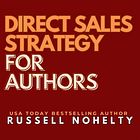
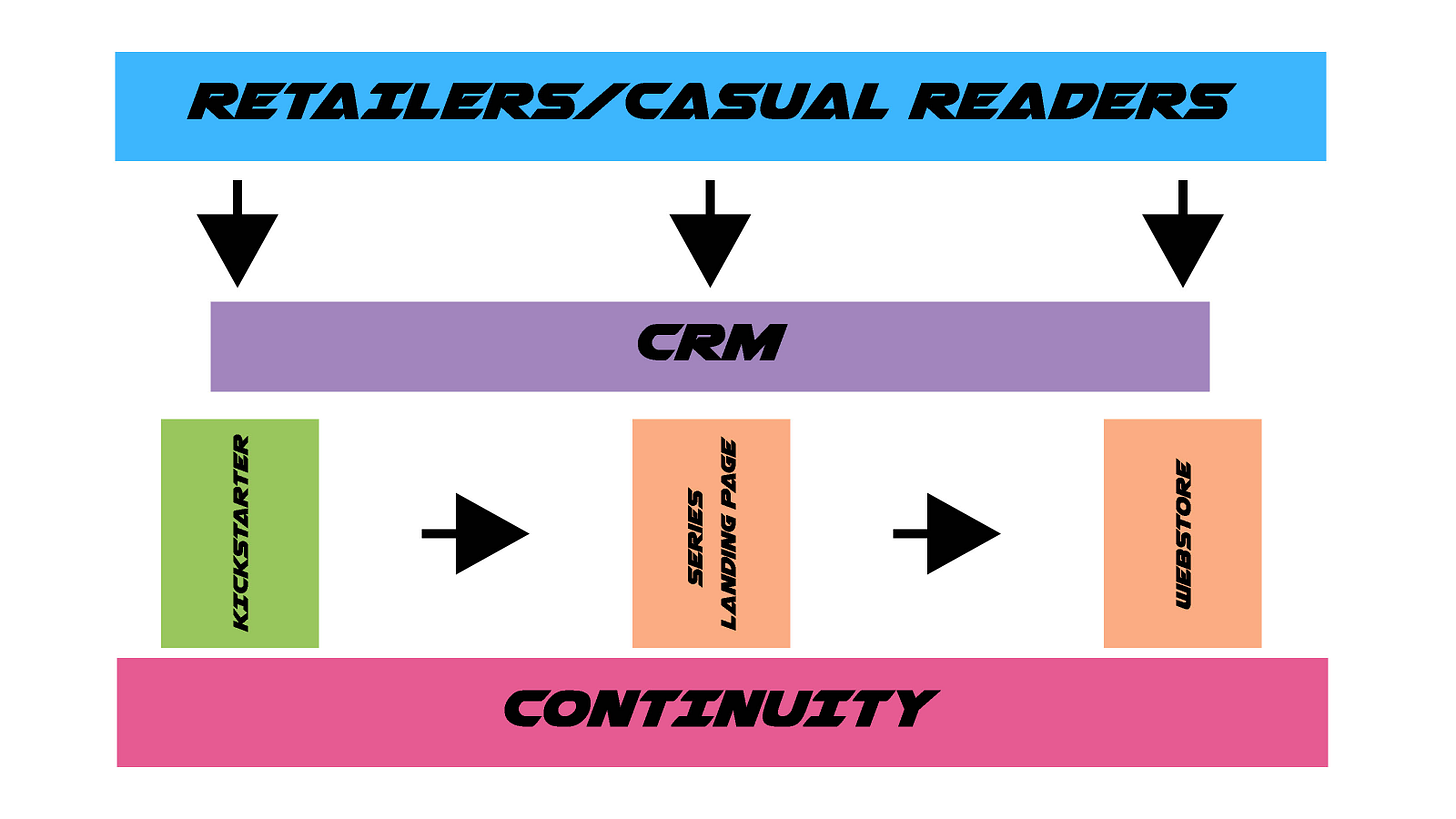




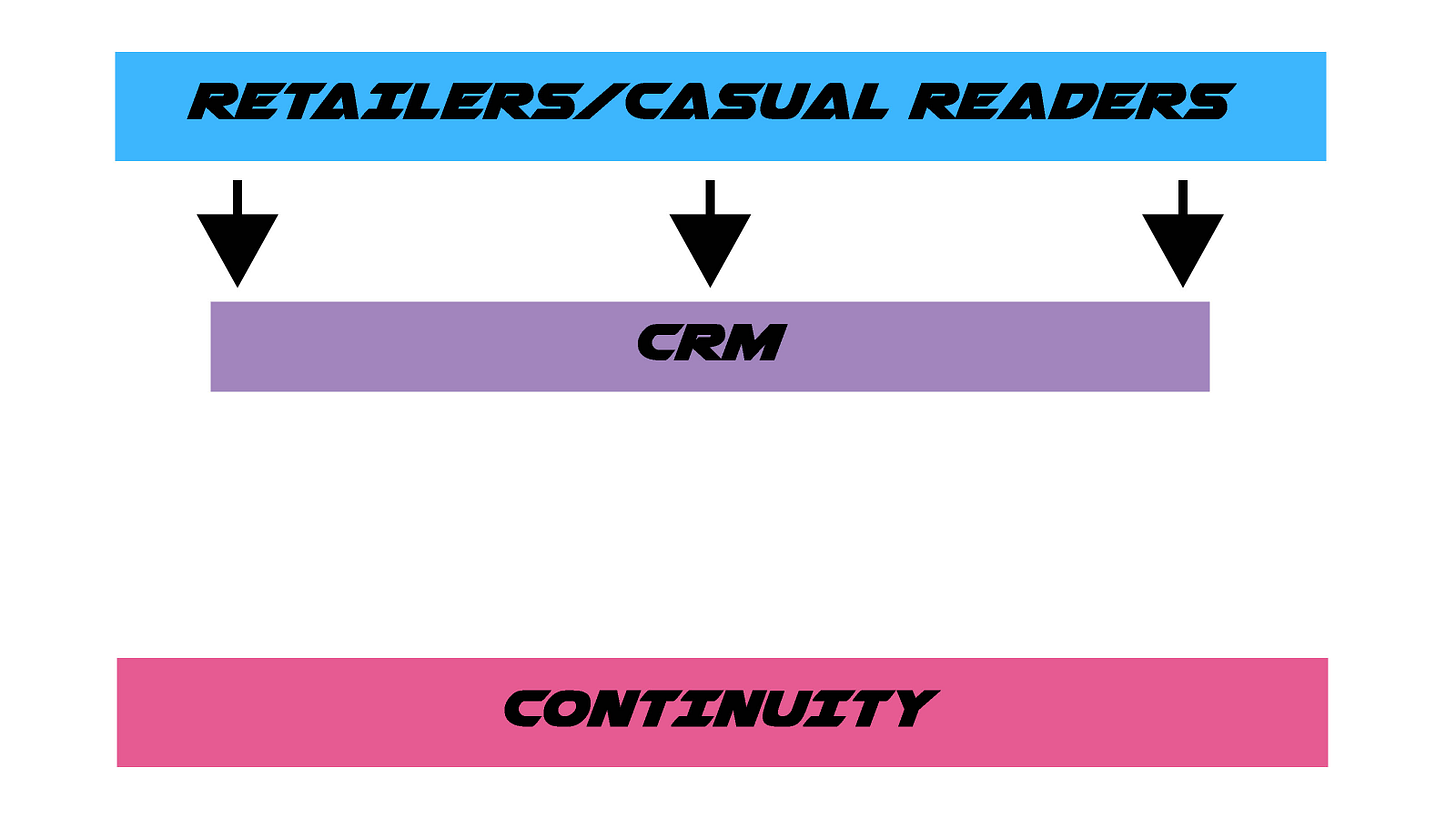
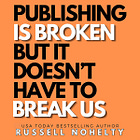
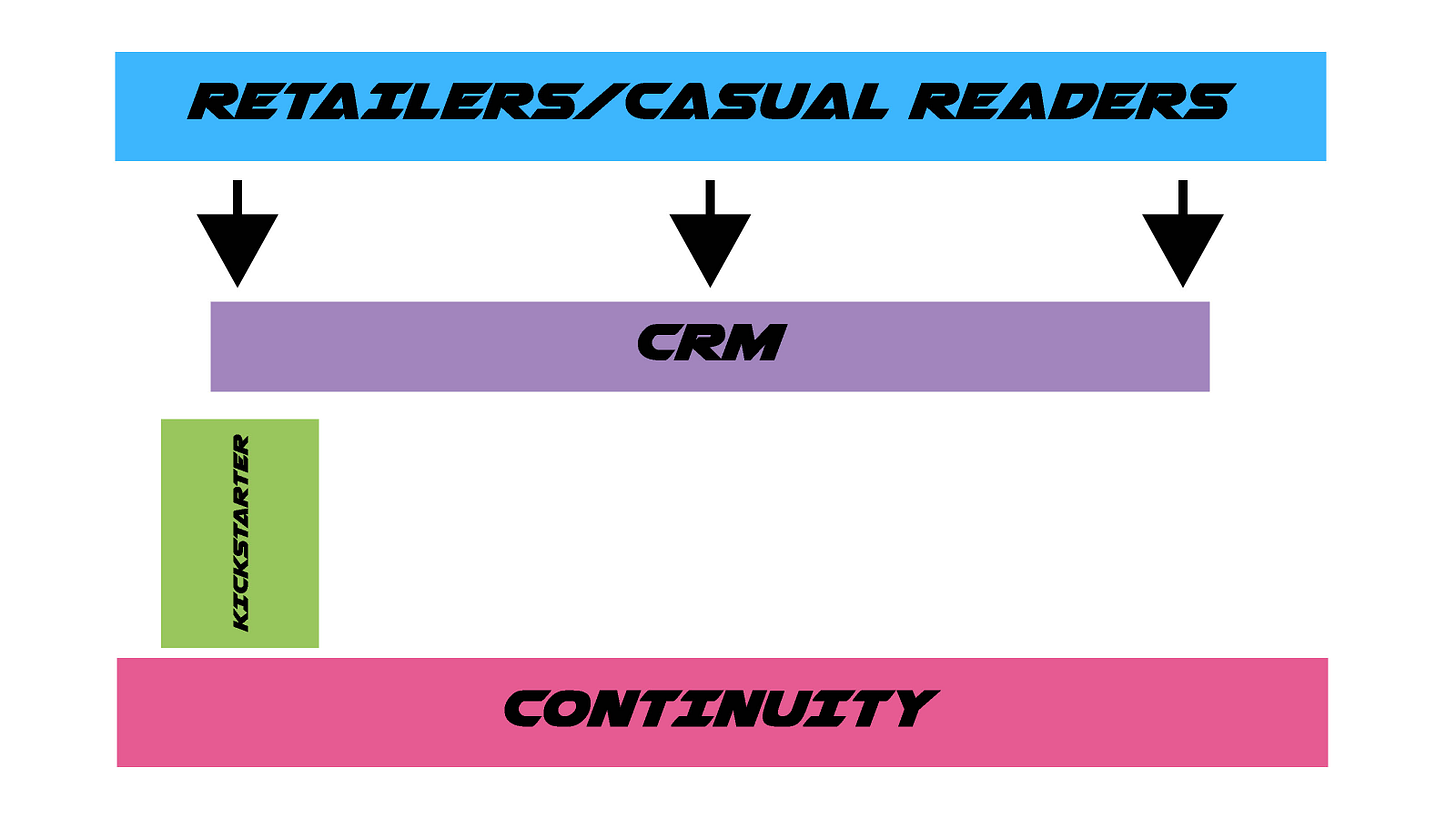
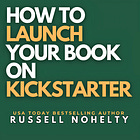
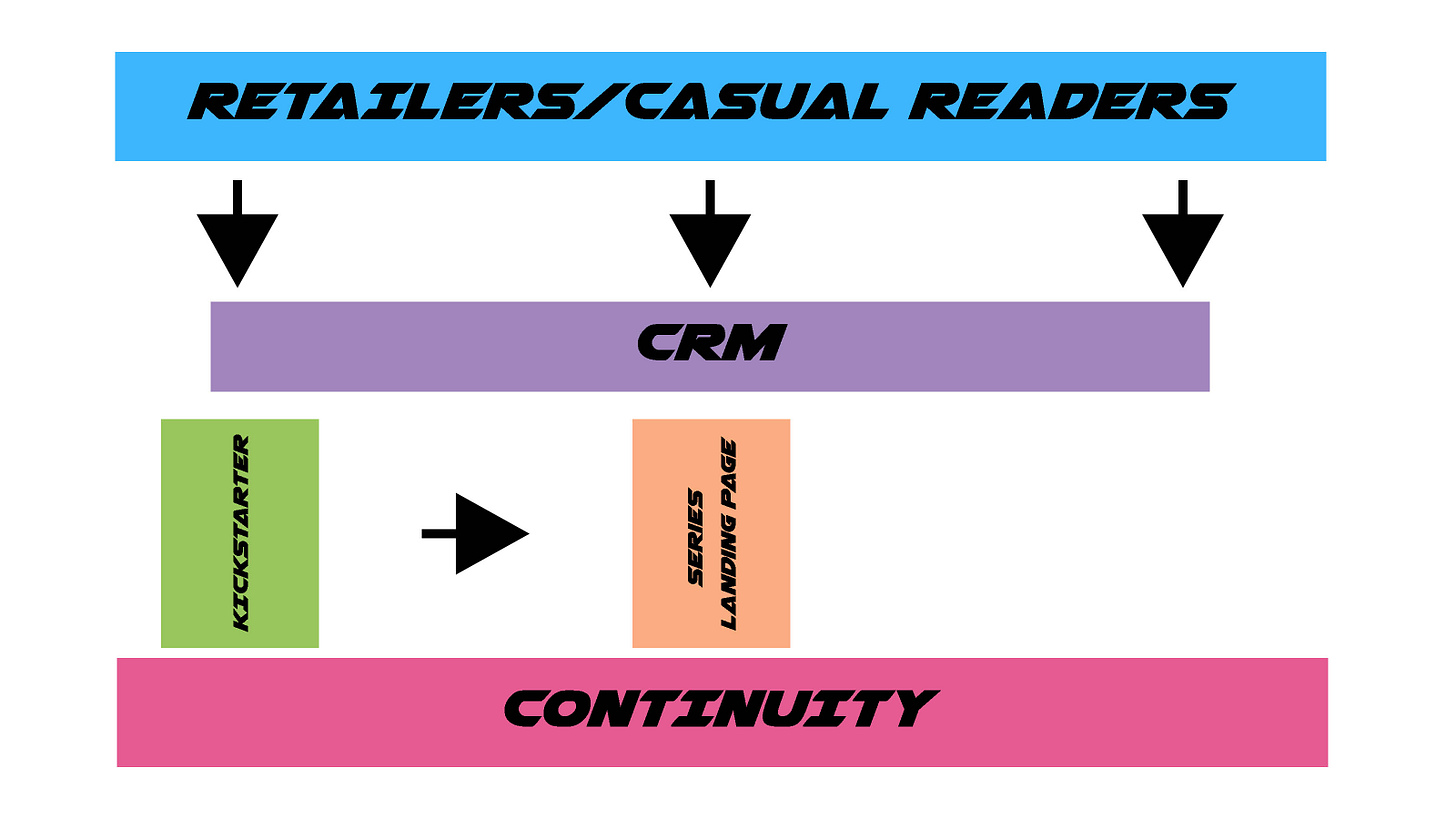
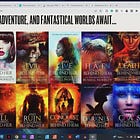
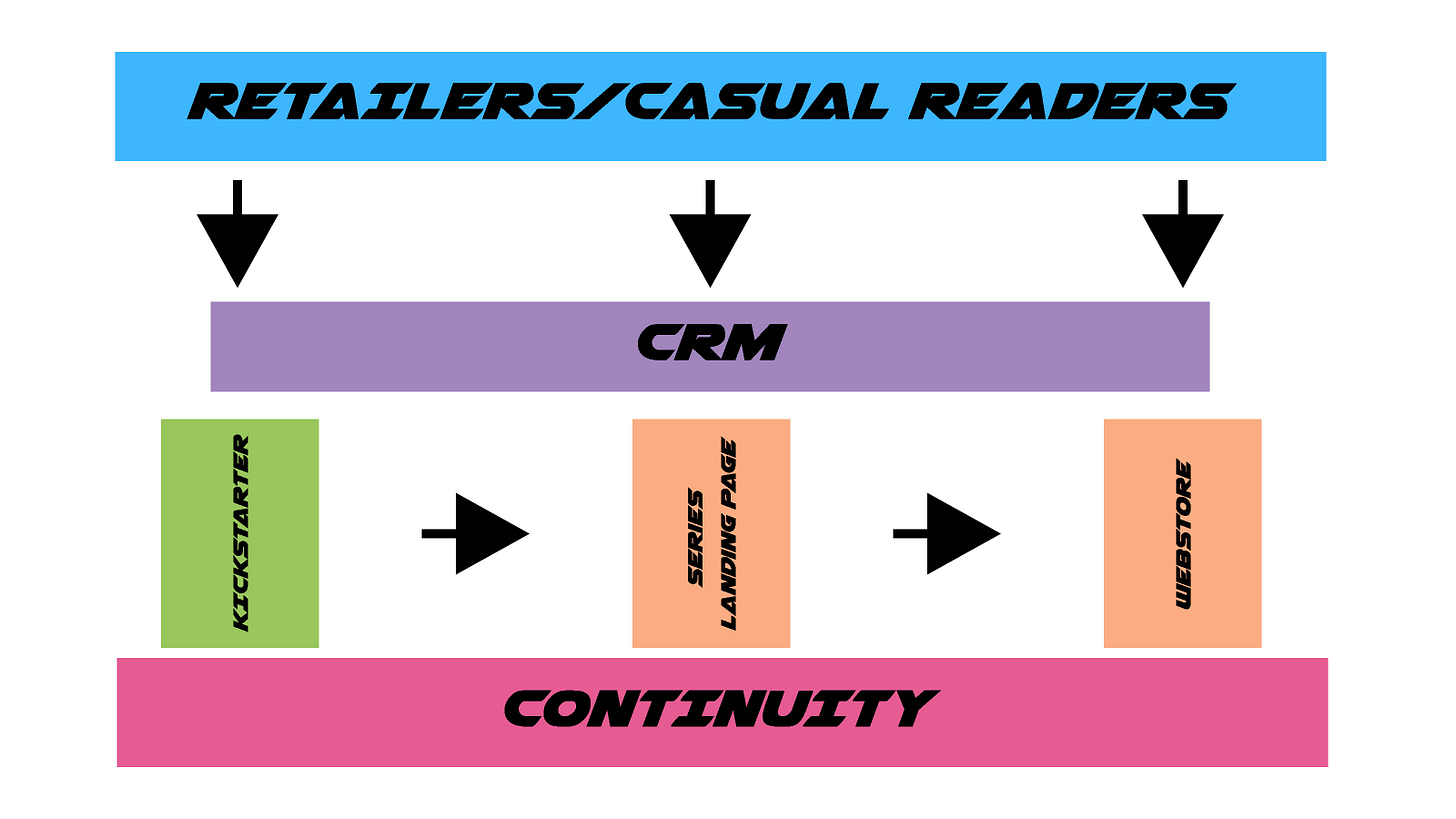
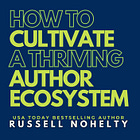

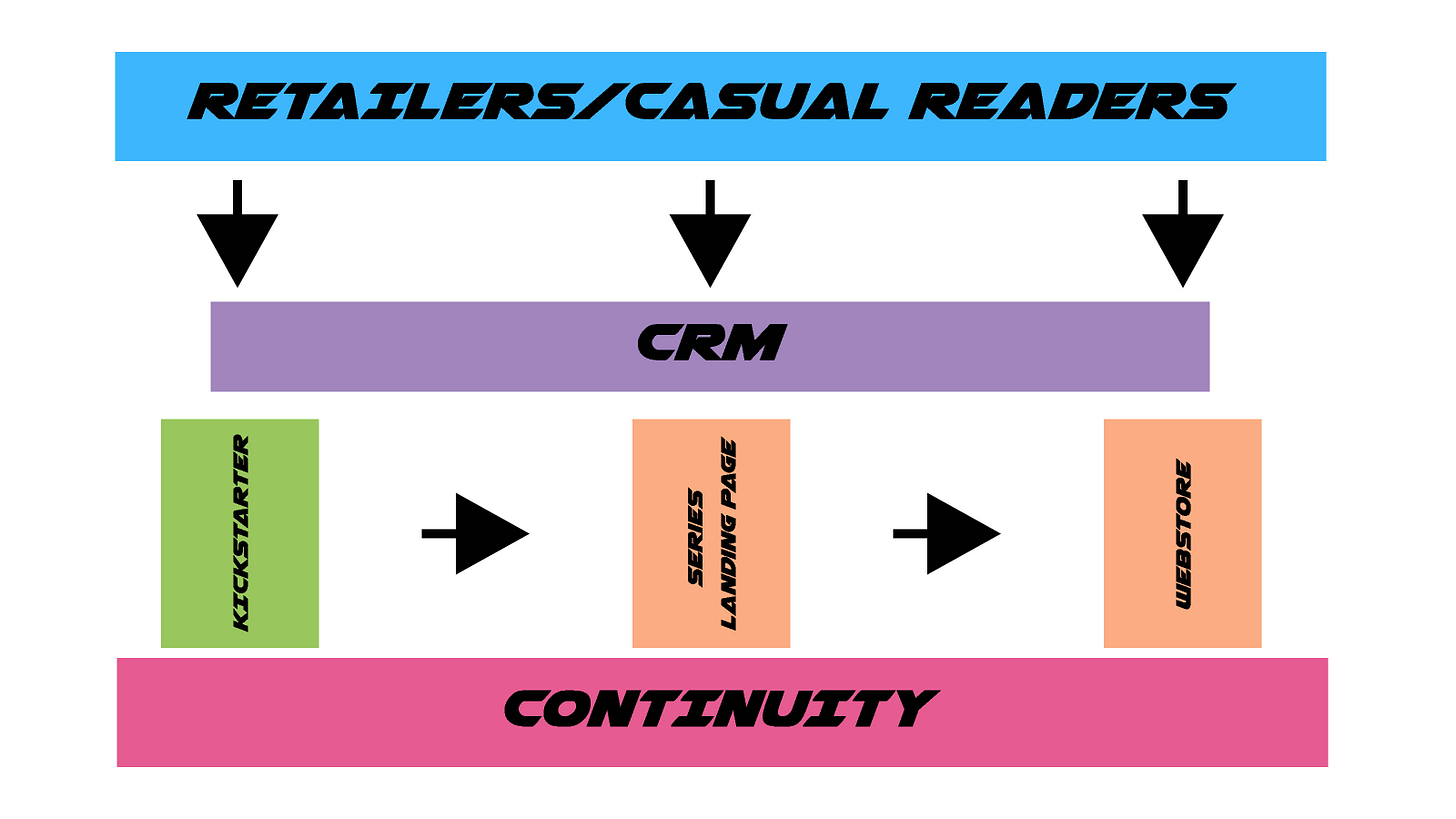
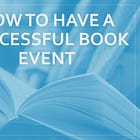
Oh man, this article resonates with me so much. I'm stuck in a place where I am my own boss (which I love) and I am juggling a hundred (thousand?) different balls just to keep afloat. I mainly survive off developmental editing jobs, and running workshops in schools, but I also have a newsletter (which has a paid option) and I write adult and young adult books.
And my mind is in a permanent fog!
Russell, can you tell me more about Kickstarter? I have toyed with the idea of starting one for my memoir-in-progress (to raise funds for it) but I haven't looked into it deeply. You mention it here, as if it's part of a built-in aspect of our publishing ecosystem, and I'd like to hear more about that, since it's new to me.